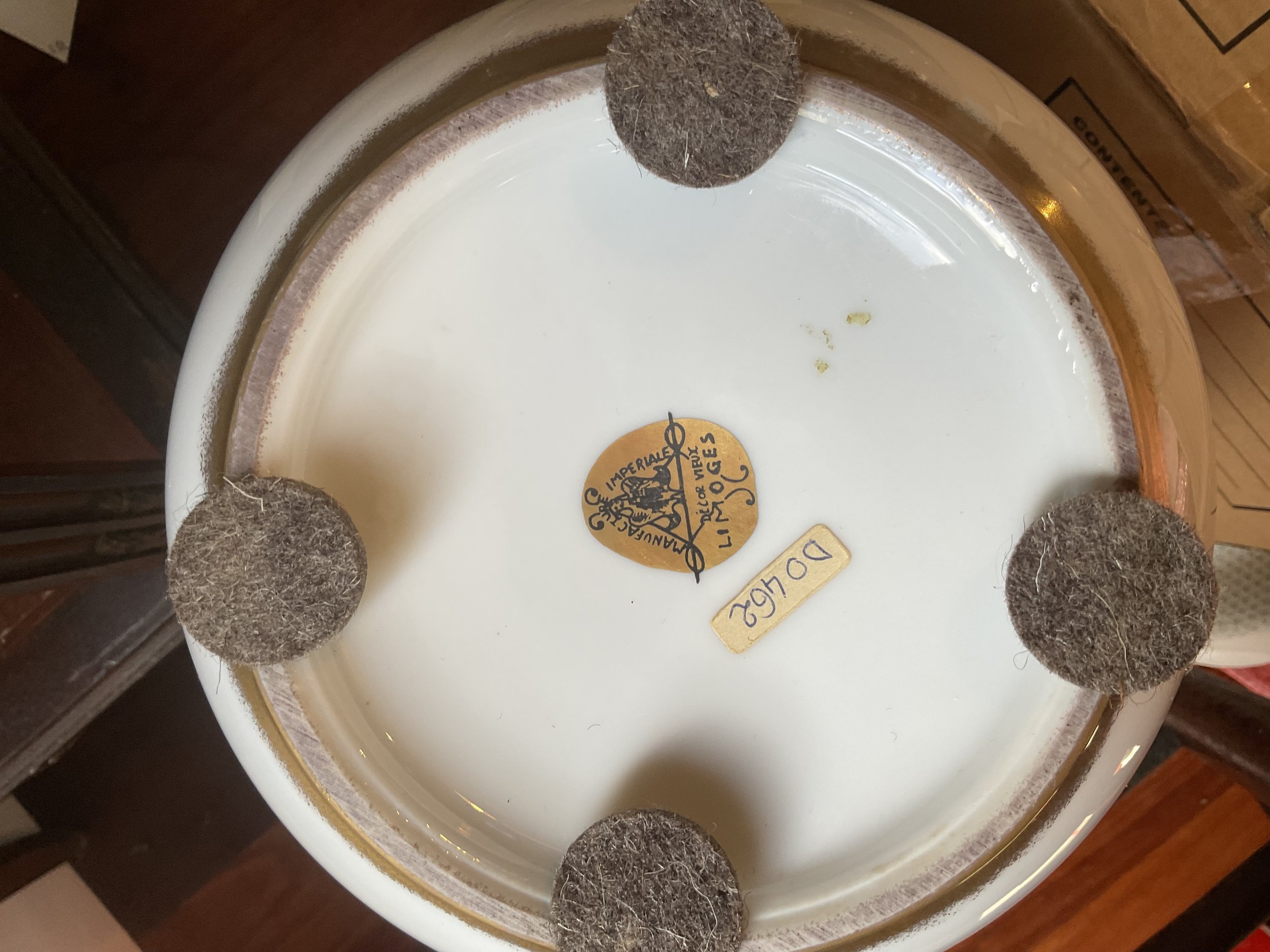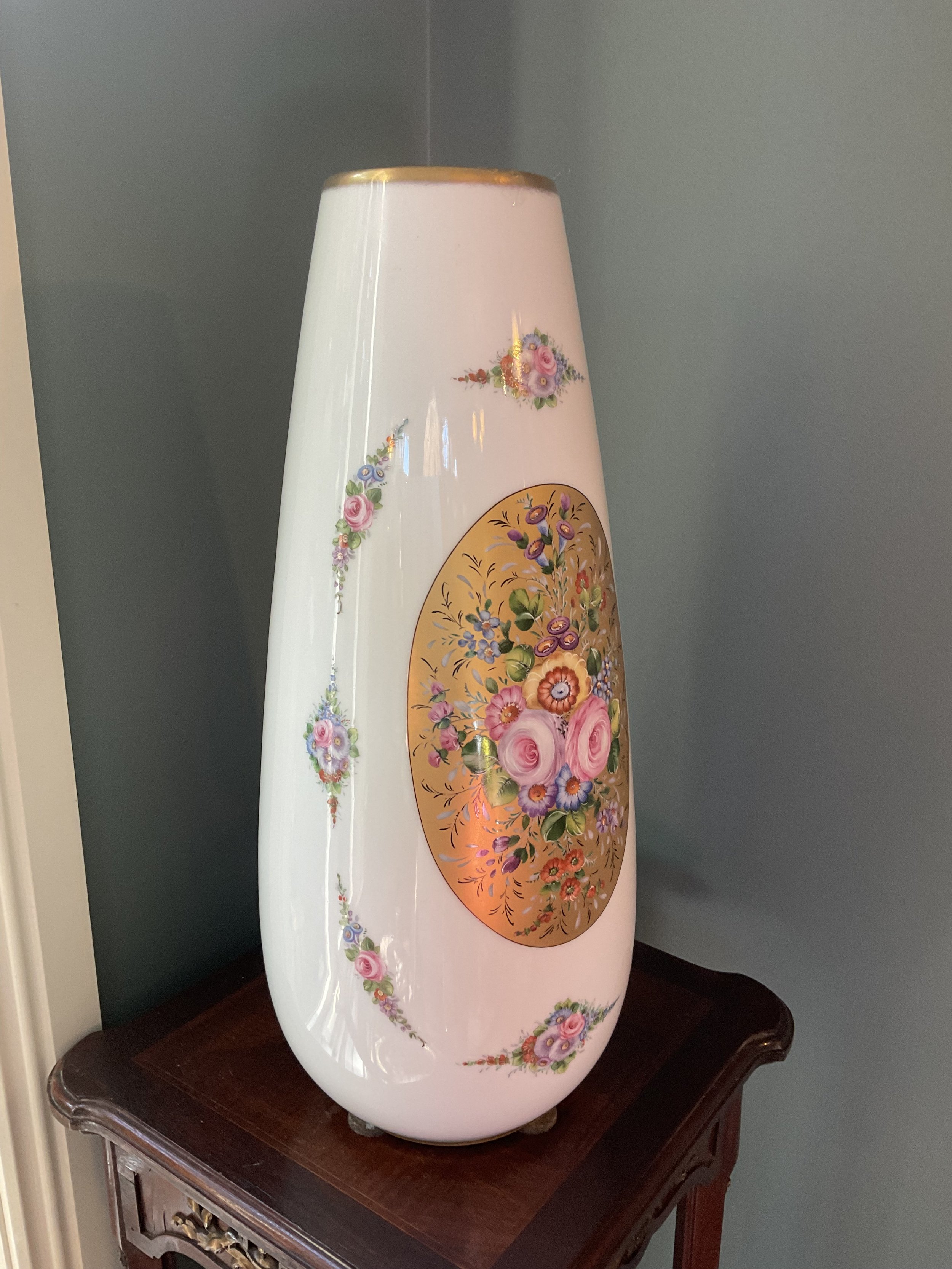 Image 1 of 10
Image 1 of 10

 Image 2 of 10
Image 2 of 10

 Image 3 of 10
Image 3 of 10

 Image 4 of 10
Image 4 of 10

 Image 5 of 10
Image 5 of 10

 Image 6 of 10
Image 6 of 10

 Image 7 of 10
Image 7 of 10

 Image 8 of 10
Image 8 of 10

 Image 9 of 10
Image 9 of 10

 Image 10 of 10
Image 10 of 10











Pair Of Antique Earthenware Tin Glazed Plates
These two small tin glazed earthenware dishes are from Portugal. They are hand painted and predominantly blue and white with some red outline. One dish features a dog and the other one has a bird on it. Both images are surrounded by an ornate design. The plates are signed at the back.
Faience is the French term used to describe tin glazed earthenware. It was predominant in the late 16th century through to the 18th century. For hundreds of years, Europeans had been searching for the secret that would lead to the production of porcelain. Chinese porcelain had been discovered in the Tang Dynasty (618 – 917). The European quest to obtain a white shining product led to the production of faience. Artisans created pieces on a potter’s wheel, a mould or by hand. It was then covered with a vitreous glaze and lead oxide which made it impermeable. The addition of the tin oxide made the glaze become opaque white. Decoration was then painted onto this. Faience was first introduced to Lyon by Italian immigrants in the late 16th century. To determine if a ceramic object is faience, look for a chip. If the ceramic within is brown, then it is faience.
These little dishes are 10 cms in diameter.
These two small tin glazed earthenware dishes are from Portugal. They are hand painted and predominantly blue and white with some red outline. One dish features a dog and the other one has a bird on it. Both images are surrounded by an ornate design. The plates are signed at the back.
Faience is the French term used to describe tin glazed earthenware. It was predominant in the late 16th century through to the 18th century. For hundreds of years, Europeans had been searching for the secret that would lead to the production of porcelain. Chinese porcelain had been discovered in the Tang Dynasty (618 – 917). The European quest to obtain a white shining product led to the production of faience. Artisans created pieces on a potter’s wheel, a mould or by hand. It was then covered with a vitreous glaze and lead oxide which made it impermeable. The addition of the tin oxide made the glaze become opaque white. Decoration was then painted onto this. Faience was first introduced to Lyon by Italian immigrants in the late 16th century. To determine if a ceramic object is faience, look for a chip. If the ceramic within is brown, then it is faience.
These little dishes are 10 cms in diameter.









































